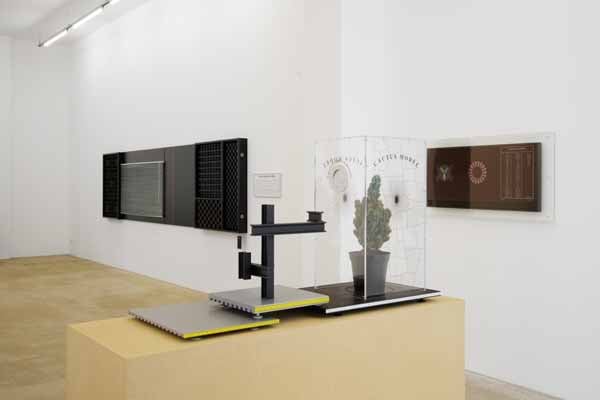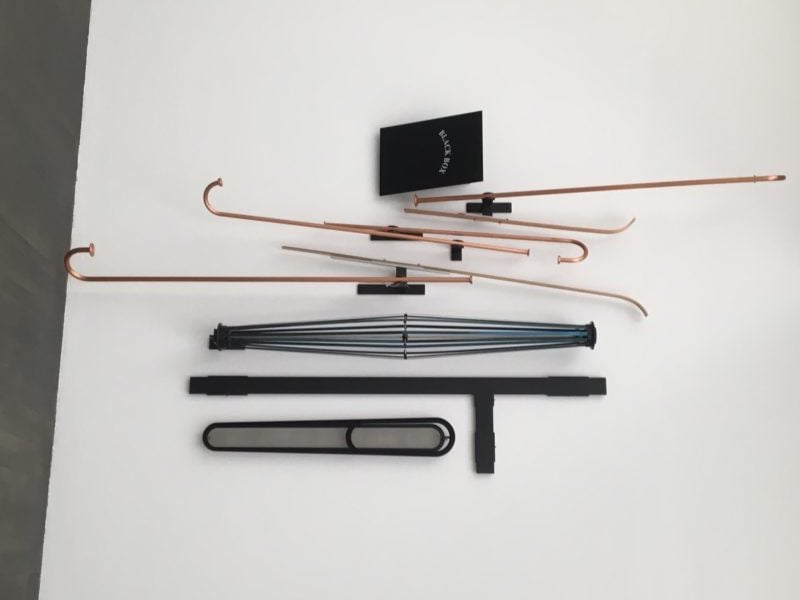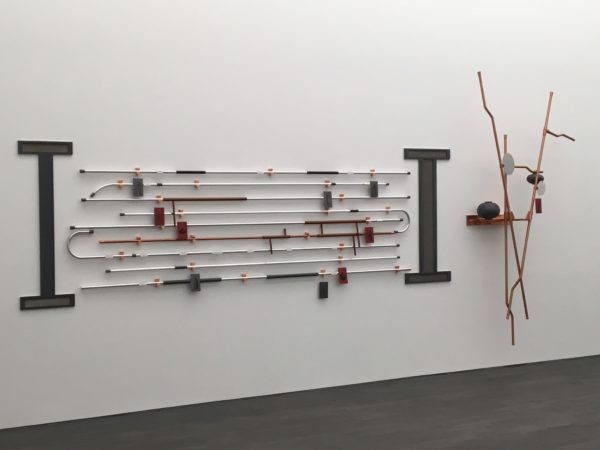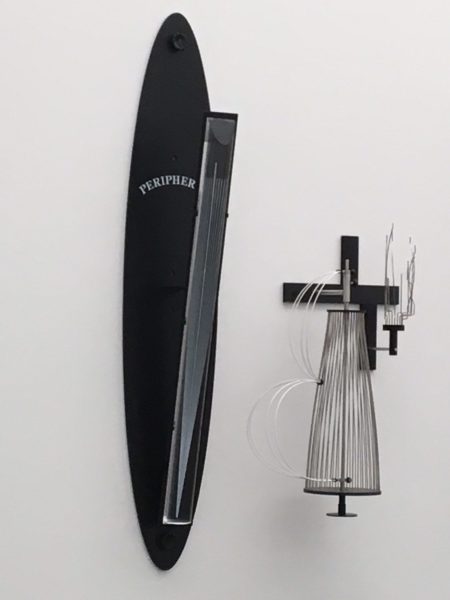On View
Are We Finally Ready for Zvi Goldstein’s Radical Vision for A New Art World?
Many works in the show were about to be destroyed.

Many works in the show were about to be destroyed.

Hili Perlson

The history of art is replete with names that never receive due exposure or do, fleetingly, and are later forgotten. And while unearthing the visionary works of under-represented artists has recently become a sport—mostly played out in curated sections at art fairs around the world—in the absence of commercial interest, artists’ entire legacies can be eradicated.
The major exhibition “Distance and Differences,” surveying the life’s work of artist Zvi Goldstein at the S.M.A.K. in Ghent, Belgium, is not only a long overdue look at this unique position, it is also essentially what saved the artist’s work from literal eradication. “I was going to send it all to be destroyed,” Goldstein told me at the opening of his show last month, “I couldn’t keep it in storage anymore.”
That’s not to say that Goldstein never received recognition—he is the recipient of several awards, including the Emet Prize for Science, Art and Culture, in 2013—and has exhibited in over 40 solo shows, at Documenta 8, and several important biennials. And yet, artworks of his that weren’t in collections have just nearly escaped the crusher.

Zvi Goldstein, Black Box (1991). Installation view at SMAK, Ghent. Photo ©Hili Perlson.
Born in Romania in 1947, Goldstein emigrated to Israel with his family as a child, and although he has lived there for most of his life, his oeuvre and philosophy are shaped by a deep sense of not belonging anywhere specific, which, paradoxically, often frees one to feel at home just about anywhere.
After studying art in Jerusalem, Goldstein traveled through Europe, living as a vagabond at first until attending Milan’s Accademia di Belle Arti di Brera. He enjoyed a fair amount of exposure after graduating in 1972, showing his early conceptual work at solo and group exhibitions with Arte Povera contemporaries, and working as an assistant to Sol LeWitt.
However, by 1978, Goldstein experienced a deep crisis of faith in art. He felt that the late modernist and the post-modernist trends of the time marked the end of artistic expression, and that Western visual culture has exhausted its means of representation. Goldstein then decided to shift the focus to the peripheries. This drastic breach has led to an unusual, hard-to-categorize art making, which began with what may sound like an irrational restriction: That year, Goldstein laid out his “Methodology”—a chart listing all the works that he will ever produce, organized into six themes.
In the nearly four decades that followed, Goldstein would go on to create works of art that adhere to one of the following groups in his hermetic system, sometimes coining new terms: “Perfect Worlds, Possible Worlds”; “Black Hole Constructions”; “Serial Constructions”; “Anomalies”; “Botanology”; and “E.T.N.O.” Having devised a plan for the production of artworks, Goldstein subsequently embarked on a series of solitary research trips to monastic communities and tribal societies all across Africa, Asia, and Asia Minor.

Zvi Goldstein, Vegetable Construct (1994). Installation view at SMAK, Ghent. Photo ©Hili Perlson.
Painted on an entire wall in the museum, Methodology (1978-2014) is in fact the first work in the exhibition, and all the art pieces he produced up to 2014 are listed on it according to their respective category.
The viewer thus finds under “Botanology” (a portmanteau for botany and genealogy perhaps?), works such as Vegetable Construct (1994). Vaguely resembling a musical score and a bouquet of flowers, the wall-mounted sculpture alludes to the non-European origins of plants and vegetables that are considered Western staples, much like the concept of cultural markers whose origins are a lot more fluid than we often acknowledge.
In the intricate wall sculpture Reconstructed Memories (Lariam B) (2001-2005), filed under “Perfect Worlds, Possible Worlds,” Goldstein channels the alienation, fears, and traumas of solitude and encounters with otherness, surely enhanced by the hallucinations that are a known side effect of taking the prophylactic malaria medication Lariam B.

Zvi Goldstein, left: Reconstructed Memories (Lariam B), (2001 – 2005), right: Cactus Model, (1991). Photo courtesy of Stedelijk Museum voor Actuele Kunst, Gent and Daniel Marzona, Berlin.
Objects such as a broken light bulb, a dried lizard, and a paper mountain are enclosed behind a shattered glass pane. There’s a table of countries visited and people met—often shamans and holy men—all reconstructed from memory. The work consists of items that allude to his personal experiences, like having been falsely accused of espionage and interrogated in custody in Chad.
Goldstein is also a writer, philosopher, and a poet. His first book, On paper (2004), opens with a description of his interrogations, while his answers to the Chad police read like a radical manifesto that defines his work. We find excerpts of his texts in the final room in the show, presented in a so-called archive along with notes, sketches, and even collected materials for all the works that were thought up while devising his “Methodology,” back in 1978, and have not yet been produced.

Zvi Goldstein, Peripheral (1990). Installation view at SMAK, Ghent. Photo ©Hili Perlson.
But perhaps more radical than his maverick approach—total, ahead of its time, and outside of, yet in contact with, the mainstream—is the aesthetic of the works he produced. Formally, they hold the sleek allure of the industrially manufactured. Not a single element in his sculptures is a readymade, and yet the artist’s hand and labor are entirely obliterated. Deceptively familiar-looking, his objects exude an air of Russian Constructivism, as he considers it the first movement to impact Western art from the margins.
Meticulously produced, the body of work rejects the tropes that equate non-Western art traditions with hand-made, exotic, and gestural artifacts and replaces them instead with monumental apparitions that hark back to pre-Modern traditions.
The most challenging aspect of his oeuvre however is the complete negation of post-colonial critique when creating from the so-called “peripheral avant-garde.” Instead, Goldstein’s model proposes something else entirely: inclusion rather than deconstruction; fluid hybridity rather than an epistemological discourse on Western dominance. It’s this inversion of imagery and denial of expectations that renders his vision timeless. Maybe we’re ready for it now.
Zvi Goldstein, “Distance and Differences” is on view at the S.M.A.K, Ghent until 23 October, 2016.